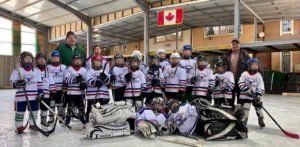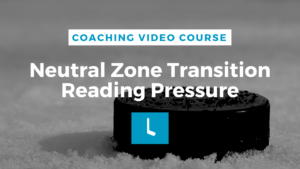Every skating coach has a unique way to teach, and their own way to pass on their passion for their craft. As they should, but I sometimes wonder if skating experts, or “Power Skating” gurus invent their own list of skating tip priorities as a marketing angle. Am I doing that right now? Perhaps, but I’m using data from studies completed by Mike Bracko at the Hockey Institute. When it comes to having an opinion on topics, like ‘what makes a great hockey skater,’ I like data.
If you search out some of the leading teachers online, they all have certain points they encourage, and a surprising number of them contradict each other. One coach stresses a recovery phase straight back under the body after the stride, while the next believes in an extended stride, toe flick, and recovery back under the body from behind. Here are these examples in diagram.
PhD Skating Coach Mike Bracko has identified 5 common themes amongst some of the best hockey skaters in the NHL, regardless of the minor differences. I like this approach, because I am convinced that every player looks, skates, shoots, passes, and plays in a unique way unto themselves. It’s the principles, or the details that govern their technique that are similar. We cannot make every skater look exactly the same. We need to embrace the unique nature of every body type and biomechanical make up.
5 Signs you are a great hockey skater:
- You have a wide stride. It is physically impossible to stride straight back, and the ideal stride extends laterally beside the body. It’s the forward momentum on the ice that makes it appear that the stride moves towards the 4 o’clock, 8 o’clock directions.
- Quick recovery. The quicker a skater gets his/her skate back to the neutral position under the body, the quicker the next stride can begin.
- Deep knee bend. Stride extension is only possible with a deep knee bend. Stride length reduces the straighter the legs begin in stride. Furthermore, the large quadriceps muscles and glutes are required to generate power, and only engaged by beginning every stride in a deep squat.
- An exaggerated forward lean. Just look at speed skaters for an example of this. Ironically we often teach players to skate with their chests up and shoulders back. It is most important however, to lean forward, while maintaining a deep knee bend at the same time.
- The arms and legs move in synch, and in opposite. Watch young skaters and you will often see their legs moving, but neither arm generating any momentum or flow in the stride. I often ask young players how they would feel playing soccer with their hands in their pockets. The question is always received as rhetorical yet for some reason players are hesitant to really pump their arms when they skate. Pump your arms to generate speed and balance!
Action Steps to Become a Great Hockey Skater:
These 5 tips will help improve your skating in a matter of minutes. Ask a friend to film yourself skating a few laps on your smartphone and see how you are doing. Coaches should incorporate skating into every practice, but please don’t blow the full our working on edge control and forget to teach the rest of the game!
Learn With US.
 We explore strategies and concepts like these above in easy to digest video tutorials at www.howtoplayhockey.ca. Join us today to learn the game.
We explore strategies and concepts like these above in easy to digest video tutorials at www.howtoplayhockey.ca. Join us today to learn the game.
*This post originally appeared in 2013, and has since been revised.







